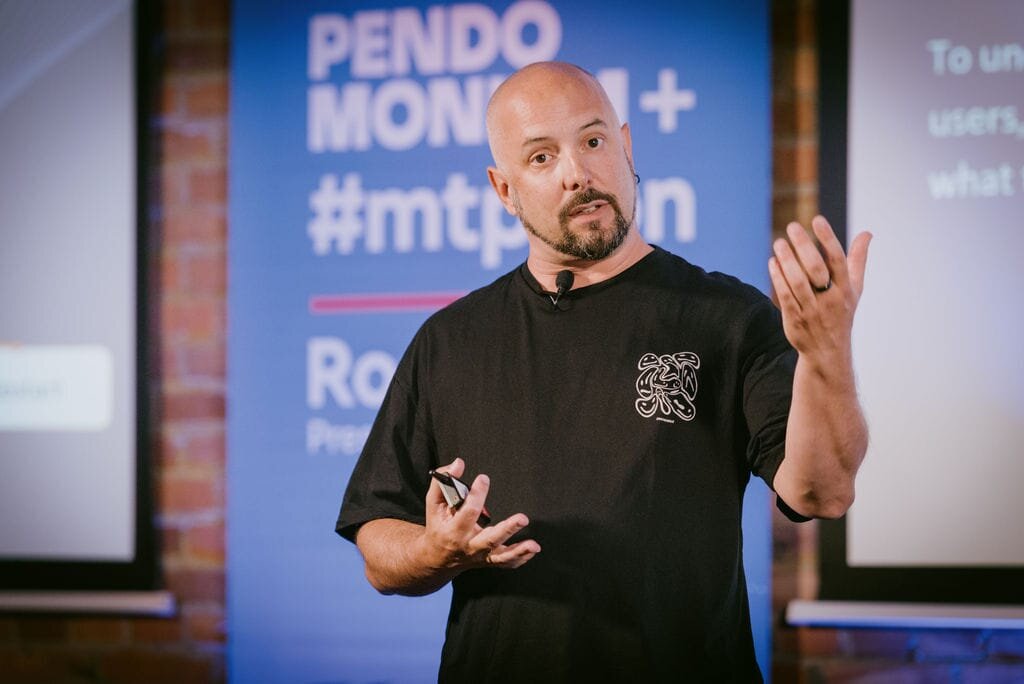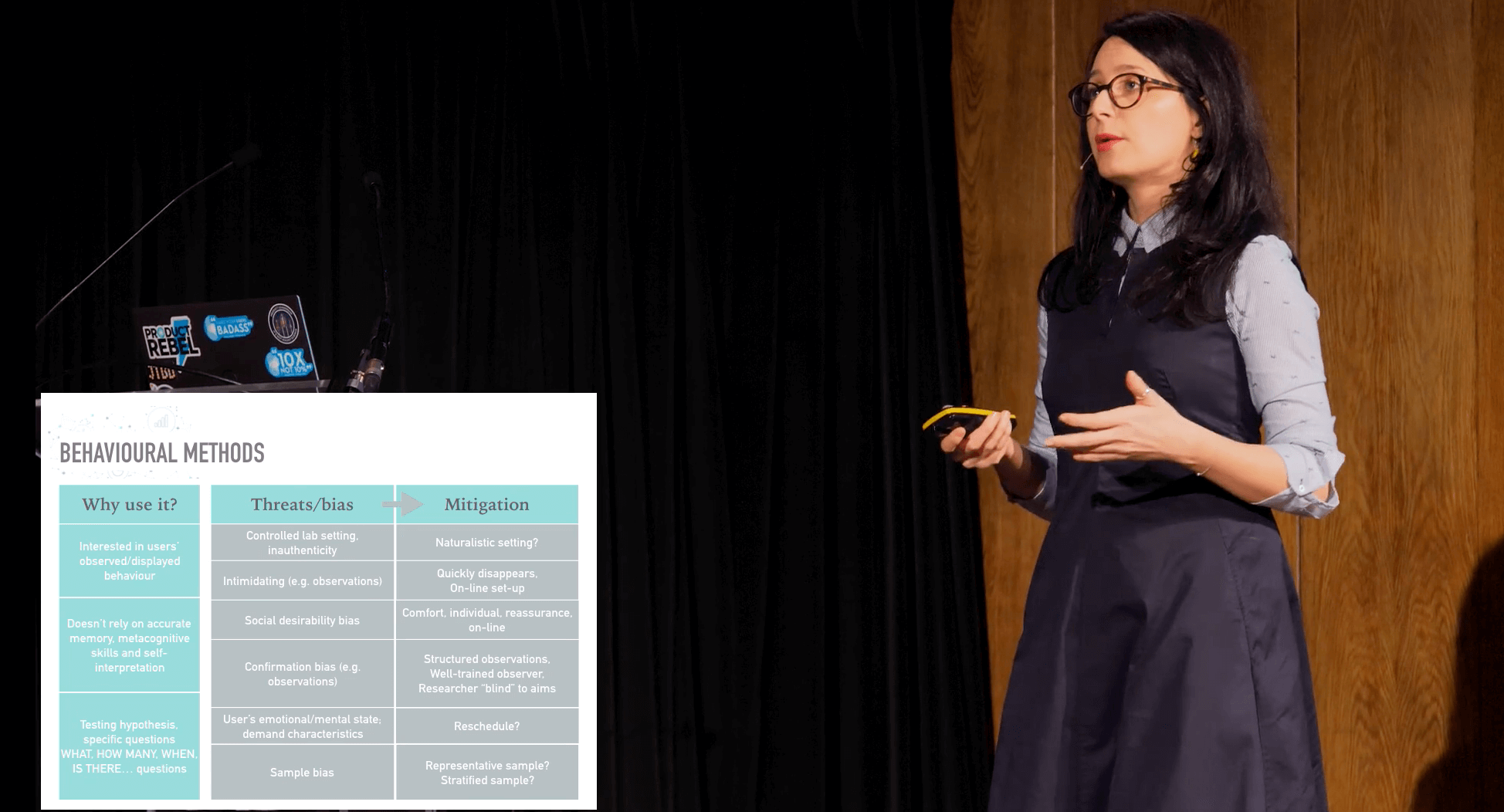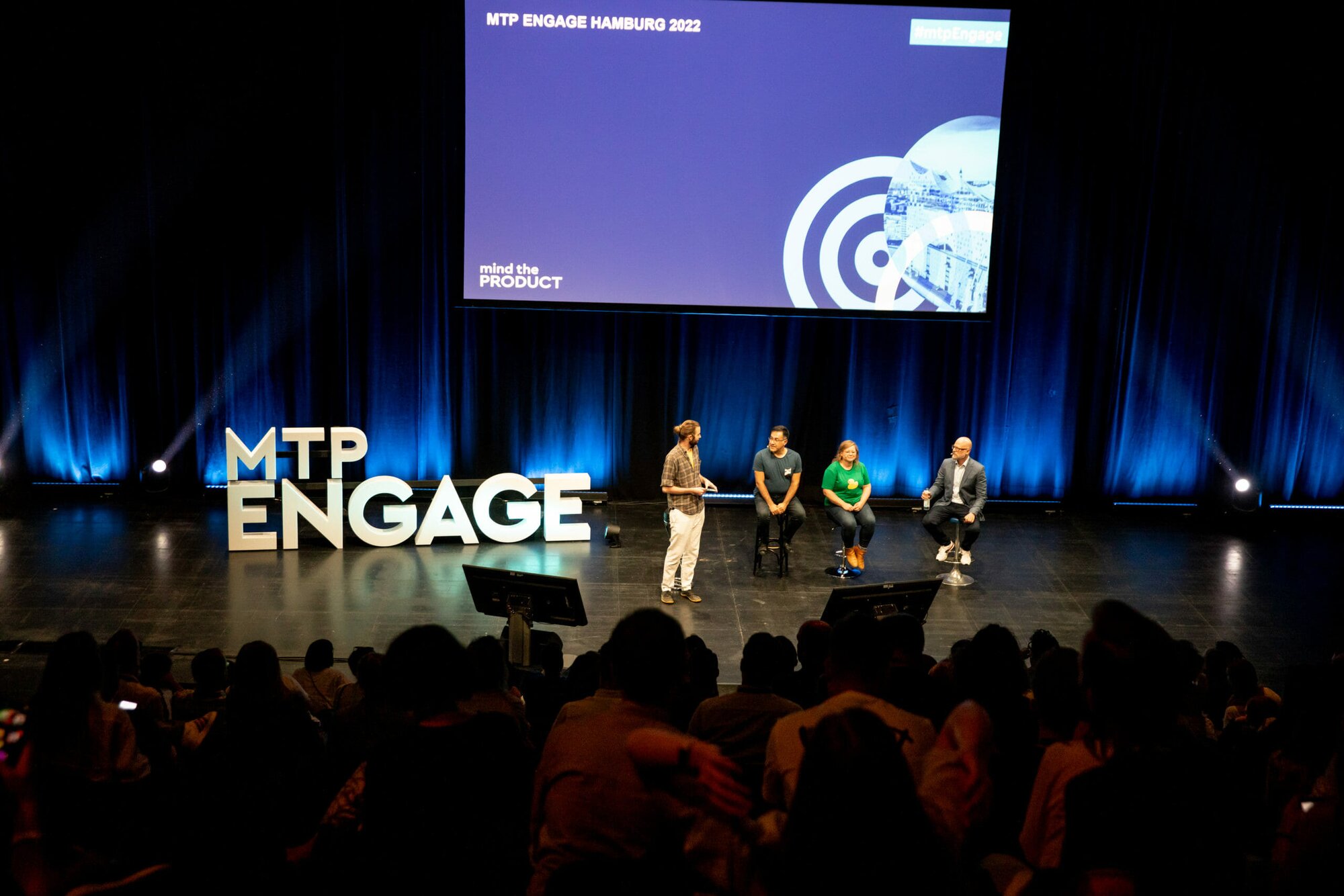Martina Kuvalja is a Senior Researcher at the University of Cambridge. In this ProductTank London talk, she explains how you should go about collecting data if you are part of a small team, and how to have meaningful conversations with the research members of your team. She speaks about:
- User Experience (UX) application
- Types of research methods
- Bias and sampling
Watch the video to see Martina’s talk in full. Or read on for an overview of her key points.
UX Application
Martina explains that the process of applying UX involves first asking research questions, followed by data collection, analysis, and then reporting on your findings. There are two types of research method (self-reporting and behavioral), as well as biases and sampling which need to be taken into account when collecting data.
Researchers need to ask themselves if the data being collected accurately represents an authentic experience or behavior. Also, is the right data being collected and is it valid? It is impossible to control everything when it comes to data collection but these questions will help to ensure accuracy.
Types of Research Method
Of the two types of research methods (self-reporting and behavioral) self-reporting is used to collect indirect measurements, such as attitudes or opinions, about certain behaviors. The second, behavioral method focuses on achieving direct measurements of a specific type of behavior – so, rather than being interested in a user’s account of their behavior, you may want to observe it directly.
Bias and Sampling
The sources of bias during data collection include the user, researcher, instrument or context. Some threats, which can impact the self-reporting method, include memory. This might occur if you ask someone if a talk they did went well. You are relying on them to accurately remember what happened during the talk. This can be seen as a threat.
Another example of a threat or bias is metacognition – relying on a person to remember their exact mental state or the feelings they had when something happened. Martina offers more examples of potential threats, and how to mitigate them while conducting research using either research method.
The major takeaway of Martina's talk is that as a product person you should try to minimize bias as much as possible when performing data collection. In addition, you should be as creative about collecting data as you are about design and other product areas.






